 Many dietary supplements are advocated to reduce certain symptoms of premenstrual syndrome (PMS). However, only one — calcium — has been demonstrated to be of significant benefit.
Many dietary supplements are advocated to reduce certain symptoms of premenstrual syndrome (PMS). However, only one — calcium — has been demonstrated to be of significant benefit.
Researchers at the University of Massachusetts, in Amherst, studied the effects of taking iron, potassium, zinc, and other minerals. Continue reading Impact of dietary minerals on PMS →
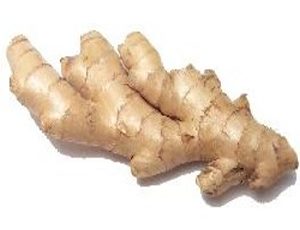 Zingiber officinale, commonly known as ginger, has been used to treat pain, among other things.
Zingiber officinale, commonly known as ginger, has been used to treat pain, among other things.
Prof. Ernst and colleagues from the University of Exeter, in the UK reviewed the evidence for the use of ginger to treat any type of pain. Continue reading Review: Ginger to treat pain →
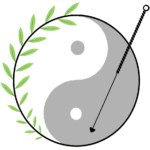 Acupuncture is often recommended for obstetrical and gynecological (Ob/Gyn) conditions.
Acupuncture is often recommended for obstetrical and gynecological (Ob/Gyn) conditions.
Prof. Ernst has reviewed the evidence. Continue reading Acupuncture in Ob/Gyn →
 Researchers at Shahid Beheshti University of Medical Sciences, in Tehran, Iran, evaluated valerian — an herb with sedative effects and antispasmodic effects on smooth muscles — on the severity of dysmenorrhea. Continue reading Valerian for dysmenorrhea →
Researchers at Shahid Beheshti University of Medical Sciences, in Tehran, Iran, evaluated valerian — an herb with sedative effects and antispasmodic effects on smooth muscles — on the severity of dysmenorrhea. Continue reading Valerian for dysmenorrhea →
 Primary dysmenorrhea is painful menstruation that’s not due to a disease, but to menstruation itself.
Primary dysmenorrhea is painful menstruation that’s not due to a disease, but to menstruation itself.
There’s “promising evidence” for acupuncture, according to at least 1 group of researchers at Kyung Hee University Medical Center, in Seoul, South Korea. Continue reading Reviews of acupuncture for primary dysmenorrhea →
 Premenstrual syndrome (PMS) refers to physical or emotional symptoms that typically occur about 5 to 11 days before a woman starts her monthly menstrual cycle.
Premenstrual syndrome (PMS) refers to physical or emotional symptoms that typically occur about 5 to 11 days before a woman starts her monthly menstrual cycle.
Researchers at Kyung Hee University, in Seoul, Korea reviewed the evidence. Continue reading Review: Acupuncture to manage PMS →
 In this study, researchers at the University of Montreal, in Quebec, evaluated the response to alternative sources of omega-3 fatty acids (krill vs fish) in women with premenstrual syndrome.
In this study, researchers at the University of Montreal, in Quebec, evaluated the response to alternative sources of omega-3 fatty acids (krill vs fish) in women with premenstrual syndrome.
A reader comments, and I reply. So, it’s back to the top of the queue for this post. Continue reading Krill oil vs fish oil to manage premenstrual syndrome and dysmenorrhea →
 A reader asked for a summary of the benefits of krill oil.
A reader asked for a summary of the benefits of krill oil.
Most of the published literature is based on animal studies. But several researchers have studied humans. Continue reading Krill oil effects in humans →
 Researchers from Dalhousie University, in Halifax, Nova Scotia reviewed the evidence and make recommendations for women experiencing symptoms of premenstrual syndrome (PMS). Continue reading Reviewing herbs, vitamins, and minerals in treating premenstrual syndrome →
Researchers from Dalhousie University, in Halifax, Nova Scotia reviewed the evidence and make recommendations for women experiencing symptoms of premenstrual syndrome (PMS). Continue reading Reviewing herbs, vitamins, and minerals in treating premenstrual syndrome →
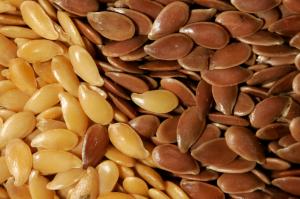 Medscape has published 2 case histories. One patient wants to take flaxseed to improve cholesterol levels and diabetes control. The other has constipation and premenstrual symptoms.
Medscape has published 2 case histories. One patient wants to take flaxseed to improve cholesterol levels and diabetes control. The other has constipation and premenstrual symptoms.
Here’s what we know. Continue reading Flaxseed review →
 In China, treating endometriosis with herbal medicines (CHM) is routine.
In China, treating endometriosis with herbal medicines (CHM) is routine.
Cochrane reviewed the evidence, and the outcome is encouraging. Continue reading Treating endometriosis with Chinese herbal medicine →
 Chastetree (Vitex agnus castus) is a deciduous shrub used to treat a variety of gynecologic conditions, including menstrual irregularities.
Chastetree (Vitex agnus castus) is a deciduous shrub used to treat a variety of gynecologic conditions, including menstrual irregularities.
Researchers from the University of Toronto and McMaster University in Hamilton, Canada reviewed the evidence as it pertains to its use by pregnant women. Continue reading No support for chastetree during pregnancy and lactation →
 Dr. Cathi Dennehy from the Department of Clinical Pharmacy at the University of California San Francisco has reviewed the evidence.
Dr. Cathi Dennehy from the Department of Clinical Pharmacy at the University of California San Francisco has reviewed the evidence.
I was surprised by her assessment of black cohosh for menopausal symptoms.
Here’s a summary of her findings.
Continue reading Review of herbal medicines in gynecology →
 This is the first study of saffron to treat premenstrual syndrome (PMS) in humans. Continue reading Saffron to treat PMS →
This is the first study of saffron to treat premenstrual syndrome (PMS) in humans. Continue reading Saffron to treat PMS →
 Chasteberry (Vitex agnus-castus), or monk’s pepper is an herbal medicine that may be effective in treatment of cyclical breast discomfort and premenstrual syndrome. This is the conclusion reached in a review published in American Family Physician.
Chasteberry (Vitex agnus-castus), or monk’s pepper is an herbal medicine that may be effective in treatment of cyclical breast discomfort and premenstrual syndrome. This is the conclusion reached in a review published in American Family Physician.
On the other hand?
Continue reading Chasteberry to treat breast discomfort and premenstrual syndrome →
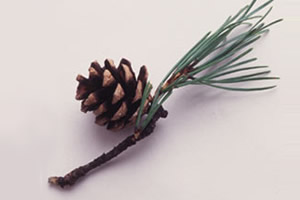 Long-term treatment with French maritime pine bark extract (pycnogenol) reduced symptoms of endometriosis, such as pelvic pain and dysmenorrhea, in a study reported in the Journal of Reproductive Medicine.
Long-term treatment with French maritime pine bark extract (pycnogenol) reduced symptoms of endometriosis, such as pelvic pain and dysmenorrhea, in a study reported in the Journal of Reproductive Medicine.
Medscape has a summary.
Continue reading Pycnogenol reduces pain of endometriosis →
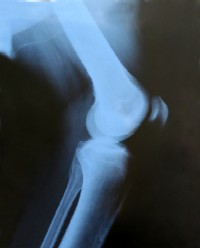 A literature review by two researchers at York University in Toronto “suggest[s] that omega-3 PUFAs are an attractive adjunctive treatment for joint pain associated with rheumatoid arthritis, inflammatory bowel disease, and dysmenorrhea [painful menstruation].”
A literature review by two researchers at York University in Toronto “suggest[s] that omega-3 PUFAs are an attractive adjunctive treatment for joint pain associated with rheumatoid arthritis, inflammatory bowel disease, and dysmenorrhea [painful menstruation].”
Results were positive for most measures of outcome.
Continue reading Evaluating omega-3 polyunsaturated fatty acid supplementation for joint pain →
 Spinal manipulation (SM) is a traditional treatment practiced by chiropractors, osteopaths, physiotherapists, and other healthcare providers mostly (but not exclusively) to treat musculoskeletal problems. SM can be described as the use of hands or force applied to the patient to achieve a therapeutic outcome.
Spinal manipulation (SM) is a traditional treatment practiced by chiropractors, osteopaths, physiotherapists, and other healthcare providers mostly (but not exclusively) to treat musculoskeletal problems. SM can be described as the use of hands or force applied to the patient to achieve a therapeutic outcome.
The literature supports SM for treating back pain, but not much else.
Continue reading A critical review of spinal manipulation →
Complementary and Alternative Medicine: Fair, Balanced, and to the Point
 Many dietary supplements are advocated to reduce certain symptoms of premenstrual syndrome (PMS). However, only one — calcium — has been demonstrated to be of significant benefit.
Many dietary supplements are advocated to reduce certain symptoms of premenstrual syndrome (PMS). However, only one — calcium — has been demonstrated to be of significant benefit.

![ReflexologyTherapy[1] ReflexologyTherapy[1]](https://thecamreport.com/images//ReflexologyTherapy1-150x150.gif) Prof.
Prof. 
 Medscape has
Medscape has  In China, treating endometriosis with herbal medicines (CHM) is routine.
In China, treating endometriosis with herbal medicines (CHM) is routine. Chastetree (Vitex agnus castus) is a deciduous shrub used to treat a variety of gynecologic conditions, including menstrual irregularities.
Chastetree (Vitex agnus castus) is a deciduous shrub used to treat a variety of gynecologic conditions, including menstrual irregularities. Dr. Cathi Dennehy from the Department of Clinical Pharmacy at the University of California San Francisco has reviewed the evidence.
Dr. Cathi Dennehy from the Department of Clinical Pharmacy at the University of California San Francisco has reviewed the evidence. This is the first
This is the first  Chasteberry (Vitex agnus-castus), or monk’s pepper is an herbal medicine that may be effective in treatment of cyclical breast discomfort and premenstrual syndrome. This is the conclusion reached in a review published in American Family Physician.
Chasteberry (Vitex agnus-castus), or monk’s pepper is an herbal medicine that may be effective in treatment of cyclical breast discomfort and premenstrual syndrome. This is the conclusion reached in a review published in American Family Physician. Why do CAM journals publish useless studies?
Why do CAM journals publish useless studies? A literature review by two researchers at York University in Toronto “suggest[s] that omega-3 PUFAs are an attractive adjunctive treatment for joint pain associated with rheumatoid arthritis, inflammatory bowel disease, and dysmenorrhea [painful menstruation].”
A literature review by two researchers at York University in Toronto “suggest[s] that omega-3 PUFAs are an attractive adjunctive treatment for joint pain associated with rheumatoid arthritis, inflammatory bowel disease, and dysmenorrhea [painful menstruation].” Spinal manipulation (SM) is a traditional treatment practiced by chiropractors, osteopaths, physiotherapists, and other healthcare providers mostly (but not exclusively) to treat musculoskeletal problems. SM can be described as the use of hands or force applied to the patient to achieve a therapeutic outcome.
Spinal manipulation (SM) is a traditional treatment practiced by chiropractors, osteopaths, physiotherapists, and other healthcare providers mostly (but not exclusively) to treat musculoskeletal problems. SM can be described as the use of hands or force applied to the patient to achieve a therapeutic outcome.